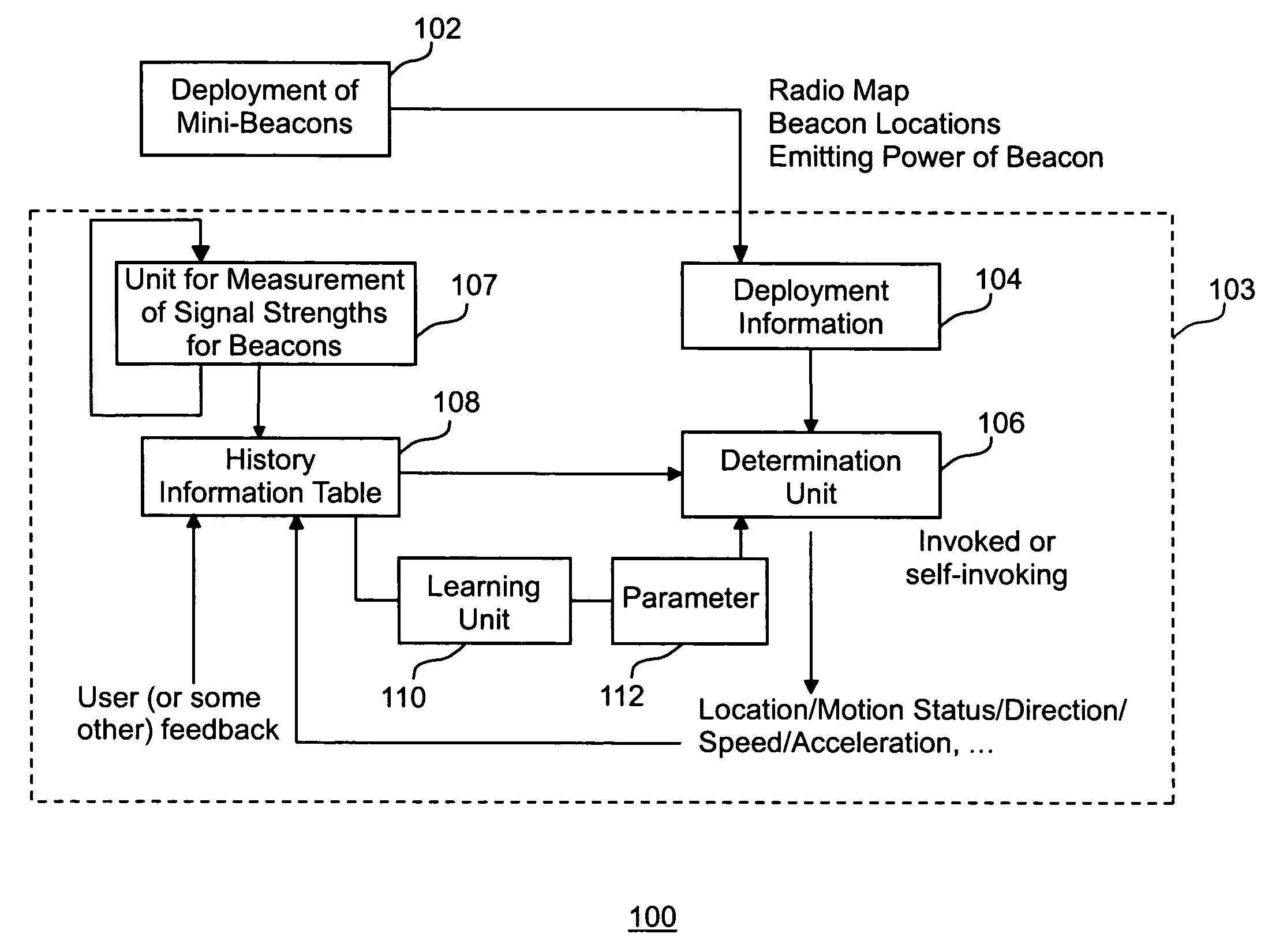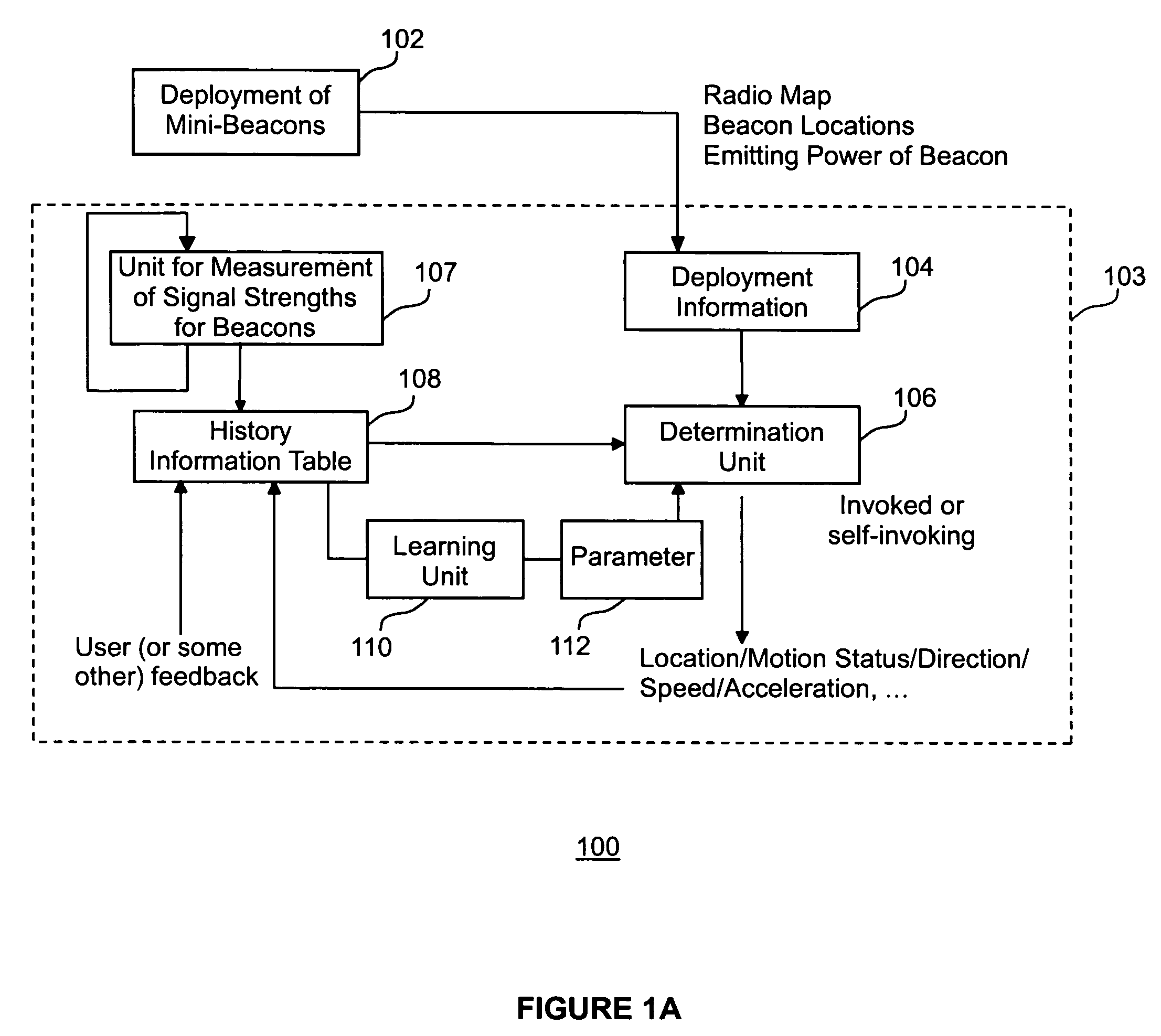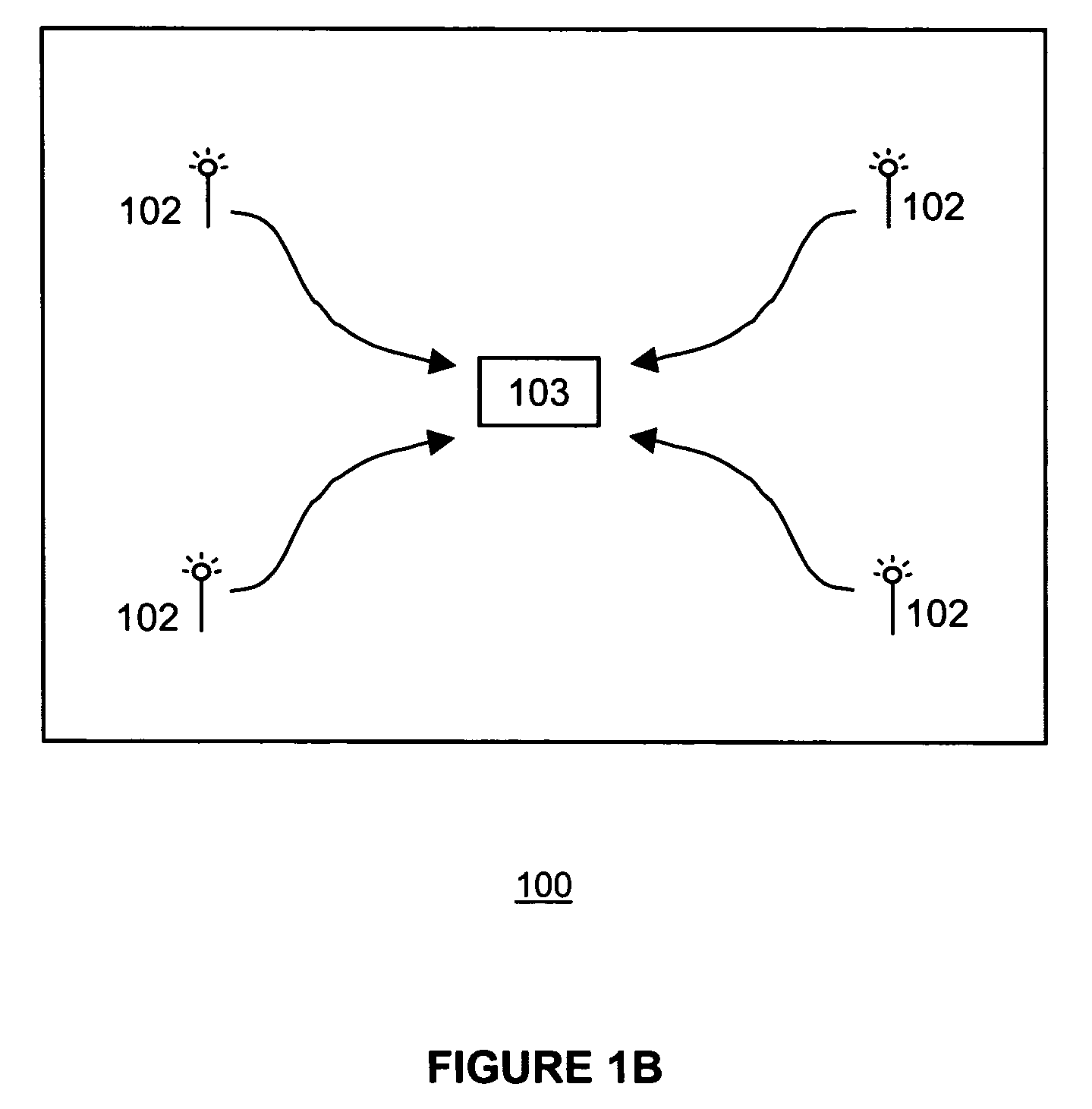Method and apparatus for location determination using mini-beacons
a technology of location method and mini-beacon, which is applied in the direction of transmitter monitoring, receiver monitoring, instruments, etc., can solve the problems of large infrastructure and satellite deployment cost, location method, and ineffective indoor gps, so as to achieve low cost, reduce installation cost, and protect privacy
- Summary
- Abstract
- Description
- Claims
- Application Information
AI Technical Summary
Benefits of technology
Problems solved by technology
Method used
Image
Examples
Embodiment Construction
[0071]The present invention includes a basic location-determination apparatus, referred to as a mini-beacon apparatus that operates in conditions in which there is nearly-direct line-of-sight between a desired beacon and the client (or target device, such as a laptop computer or other stationary or hand-held device). A mini-beacon radiates a signal and this signal can be any form of wave for which the intensity can be measured at a target receiver. A client target device with a receiver for the signals will use a procedure based on the measured signal intensities from each beacon within range to determine proximity to the nearest beacon. The mini-beacons are intended to be used in local applications, such as determining in which room or cubicle a target client is currently located. The mini-beacon apparatus may include a 2-way communication device so that a beacon signal is transmitted in response to a request transmitted from a client. A mini-beacon device can also be a transmit-on...
PUM
 Login to View More
Login to View More Abstract
Description
Claims
Application Information
 Login to View More
Login to View More - R&D
- Intellectual Property
- Life Sciences
- Materials
- Tech Scout
- Unparalleled Data Quality
- Higher Quality Content
- 60% Fewer Hallucinations
Browse by: Latest US Patents, China's latest patents, Technical Efficacy Thesaurus, Application Domain, Technology Topic, Popular Technical Reports.
© 2025 PatSnap. All rights reserved.Legal|Privacy policy|Modern Slavery Act Transparency Statement|Sitemap|About US| Contact US: help@patsnap.com



